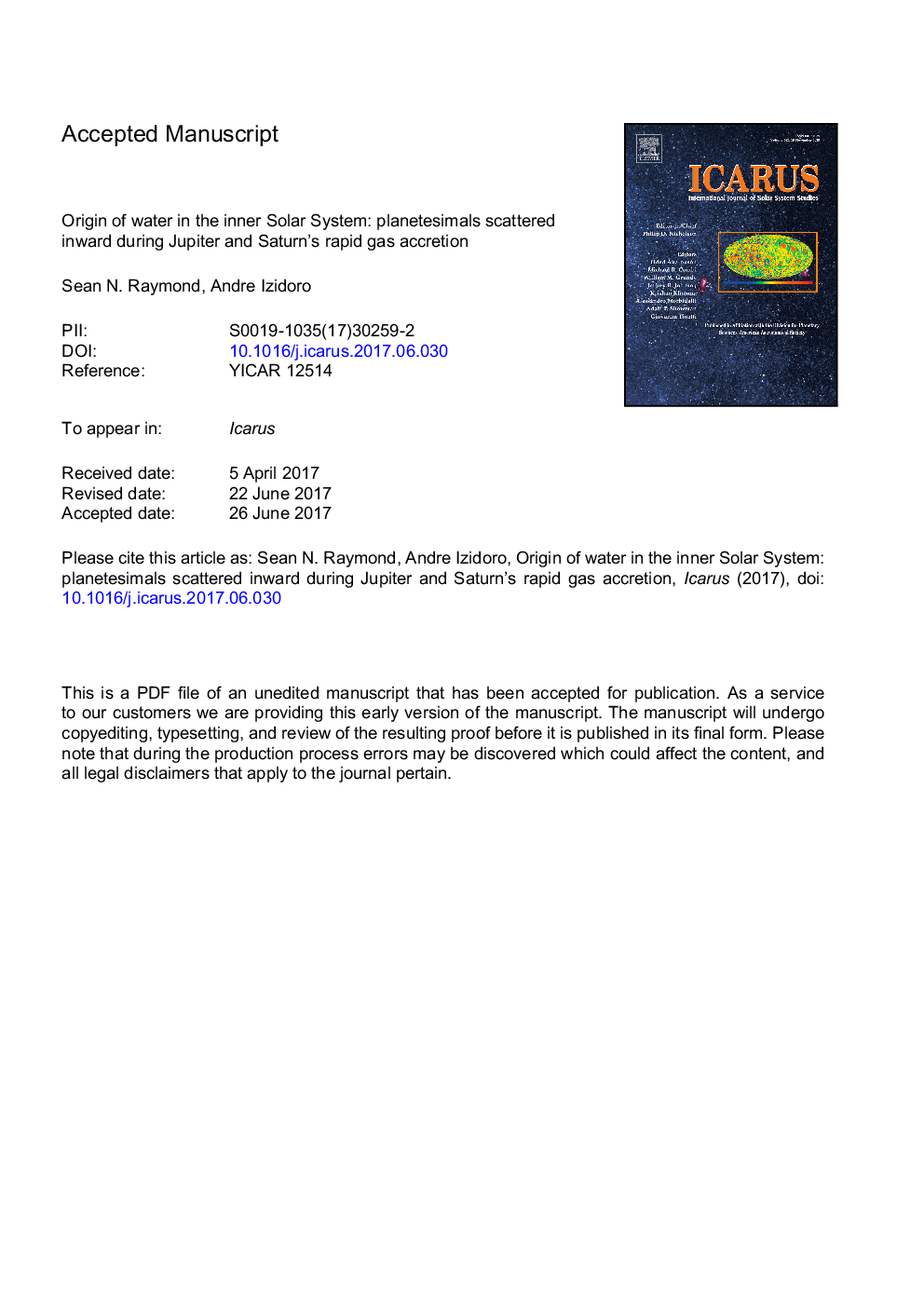| Article ID | Journal | Published Year | Pages | File Type |
|---|---|---|---|---|
| 5487174 | Icarus | 2017 | 51 Pages |
Abstract
There is a long-standing debate regarding the origin of the terrestrial planets' water as well as the hydrated C-type asteroids. Here we show that the inner Solar System's water is a simple byproduct of the giant planets' formation. Giant planet cores accrete gas slowly until the conditions are met for a rapid phase of runaway growth. As a gas giant's mass rapidly increases, the orbits of nearby planetesimals are destabilized and gravitationally scattered in all directions. Under the action of aerodynamic gas drag, a fraction of scattered planetesimals are deposited onto stable orbits interior to Jupiter's. This process is effective in populating the outer main belt with C-type asteroids that originated from a broad (5-20â¯AU-wide) region of the disk. As the disk starts to dissipate, scattered planetesimals reach sufficiently eccentric orbits to cross the terrestrial planet region and deliver water to the growing Earth. This mechanism does not depend strongly on the giant planets' orbital migration history and is generic: whenever a giant planet forms it invariably pollutes its inner planetary system with water-rich bodies.
Keywords
Related Topics
Physical Sciences and Engineering
Earth and Planetary Sciences
Space and Planetary Science
Authors
Sean N. Raymond, Andre Izidoro,
